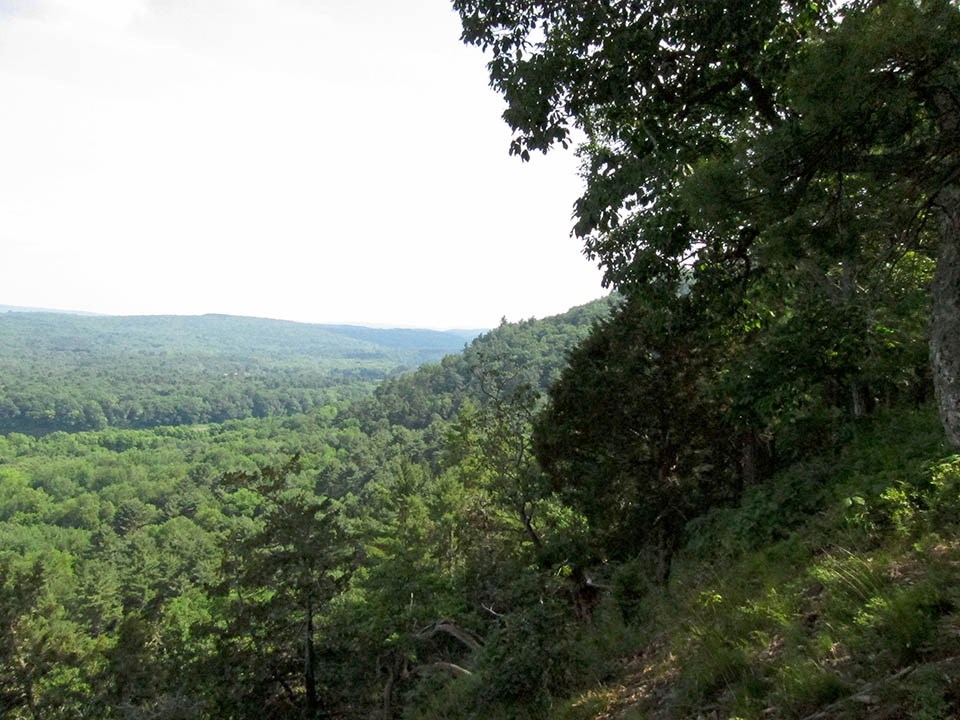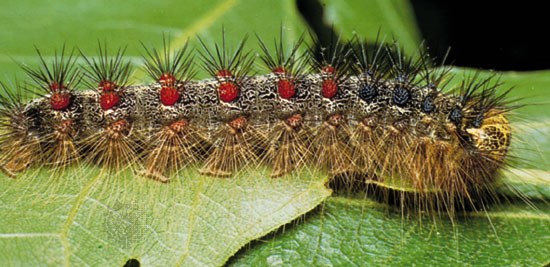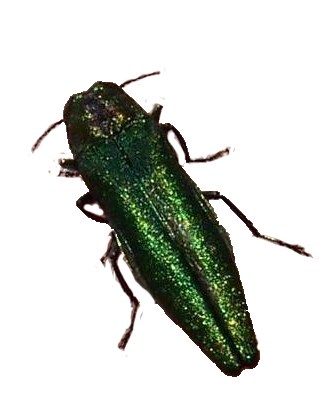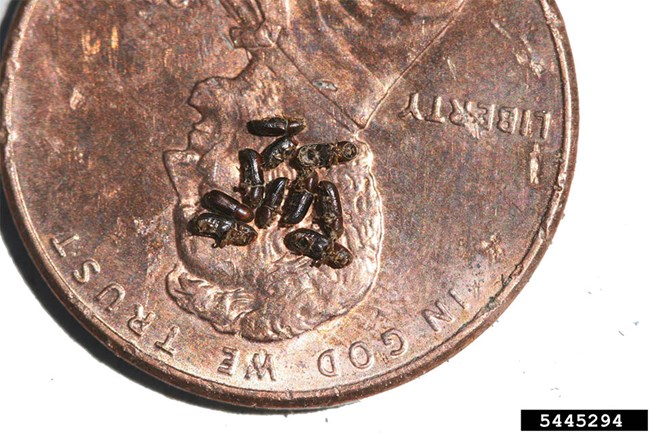Last updated: June 18, 2018
Article
Seeing the Forest and the Trees: Monitoring Program Yields Insights into Forest Health in Delaware Water Gap National Recreation Area
From a mountaintop vista in the Delaware Water Gap National Recreation Area, forests spread across the Delaware River Valley. This vast sea of green is a complex ecosystem that provides habitat for countless plants, animals, fungi, and insects. Beyond providing beautiful landscapes for hiking, boating, and other outdoor recreation, forests maintain soil stability and protect water quality. Forests also influence our weather and reduce some gases that contribute to climate change.

NPS / Doug Manning
Understanding the current condition of park forests and how the forests are changing is critical to long-term management of park ecosystems. One reason that monitoring forest health is so important -- the forests are constantly changing. Storms, pests, pathogens, drought, and new species all play a role in shaping the forest. Studying the different components of a forest gives us information on the health of the forest, which allows park managers to make better informed decisions on how to manage park resources. In particular, mortality (how many trees are dying), recruitment (how many trees are growing into the canopy), and tree growth are important indicators of forest health and vitality.
“How are park forests changing over time in relation to weather, climate, landscape dynamics, invasive species, deer browse, and natural processes such as disturbances and succession?”
Changing Forests on Upper Mountain Tops
In drier habitats, oak and hickory trees dominate the forest canopy, often with blueberries, huckleberries, and mountain laurel bushes growing underneath. These forests are being shaped by periodic outbreaks of the exotic gypsy moth (Lymantria dispar dispar) whose caterpillars voraciously feed on oak leaves (and many other trees) until the entire forest is defoliated and the forest floor becomes unusually sunny. This extra sunlight has encouraged many white pine seedlings to grow into young trees, especially on the Pennsylvania side of the park. Typically, young white pine seedlings would not thrive in a mature, shady oak-hickory forest.

© Alexander Klots
When gypsy moth caterpillars defoliate a tree, the tree often regrows its leaves, which drains the tree’s stored energy and causes stress. In recent years, white oak trees in the park have been dying at a higher rate than other species, likely as a result of the gypsy moth caterpillar outbreaks and the droughty conditions on the ridgetops where the white oaks are common. Throughout the eastern United States, white oak has been in decline over the past two centuries, as fire suppression has had greater negative impact on white oak, compared with other oak species.
Areas in the park where many oak trees have died as a result of gypsy moth outbreaks may be opportunities for park managers to restore the oak forest. In these areas, oak seedlings are often being shaded by red maple seedlings. The strategic use of prescribed fire can control maple seedlings, while promoting oak seedlings and establishing a young oak-dominated forest that provide food and habitat to hundreds of species.
Changing Forests in Old Fields and Shrublands
The park contains many abandoned pastures and shrubby old fields in which trees are currently establishing. These young, fast-growing trees will eventually create forests, unless invasive exotic shrubs like multiflora rose, Japanese barberry, autumn-olive, and honeysuckles dominate the fields and prevent trees from growing. Controlling invasive species is critical to protecting and promoting these young forests.
Changing Forests on Lower Slopes in the River Valley
In mesic habitats, the composition of the forest canopy is relatively stable. The most common species, such as white pine, red maple, sugar maple, red oak, black birch, and tuliptree have either strong growth or solid recruitment into the canopy. In the longer term, shade-tolerant species such as sugar maple and American beech may become more prominent in these habitats because their seedlings and saplings can thrive under a mature forest canopy with little direct sunlight. Ash seedlings are very common in mesic forests, however, these seedlings are not predicted to survive to reach the forest canopy unless an effective biological control for emerald ash borer is discovered.
NOT WANTED: These Bugs in Your Park

Emerald Ash Borer
This metallic green exotic beetle (Agrilus planipennis) was discovered near Detroit, Michigan in the summer of 2002 and had spread to western Pennsylvania by 2007. The beetle larvae (the immature stage) feed on the inner bark of ash trees (Fraxinus spp.), impacting the tree’s ability to transport water and nutrients. By 2018, emerald ash borer had been detected in all of the counties surrounding Delaware Water Gap; however, it had not yet been observed in the park. Park managers and visitors should be on the lookout for signs of borer infestation, ash decline, or woodpecker activity on ash trees. Monitoring data from the Eastern Rivers & Mountains Network will provide information on ash mortality and how forests change as a result of the beetle infestation.

Photo courtesy Whitney Cranshaw / Bugwood.org
Walnut Twig Beetle (causes Thousands Canker Disease)
Thousand cankers disease affects black walnut (Juglans nigra) trees and is caused by the combined activity of a fungus (Geosmithia morbida) and the walnut twig beetle (Pityophthorus juglandis). When these tiny beetles carrying the fungus bore into a tree, the fungus causes cankers in the inner bark, disrupting the flow of nutrients through the tree. Black walnuts dying from this disease were found in southeastern Pennsylvania in 2011. Park managers should be vigilant for signs of black walnut decline, especially along the floodplain of the Delaware River where black walnut trees are common.
PROTECT YOUR PARKS - DON’T MOVE FIREWOOD!

For More Information
Contacts
Stephanie Perles
Plant Ecologist
814-441-9643
stephanie_perles@nps.gov
Matt Marshall
Program Manager
814-863-0134
matt_marshall@nps.gov
Webpages
Vegetation and Soils Monitoring
Eastern Rivers & Mountains Network
Report
Perles S and Others. 2016. Forest dynamics in national parks in the Eastern Rivers and Mountains Network.. Natural Resource Report. NPS/ERMN/NRR—2016/1182. National Park Service. Fort Collins, Colorado
Summary by the Eastern Rivers & Mountains Network, January 2016. Updated June 2018.
